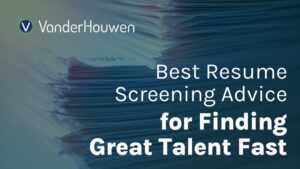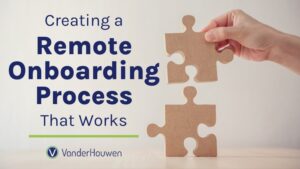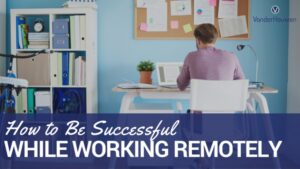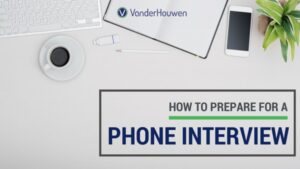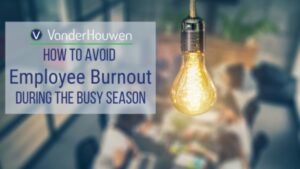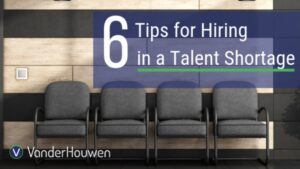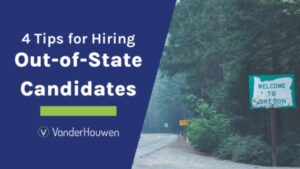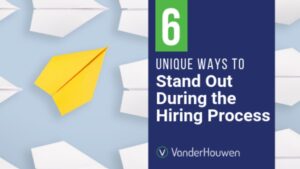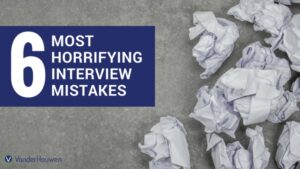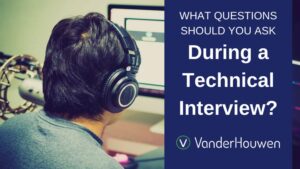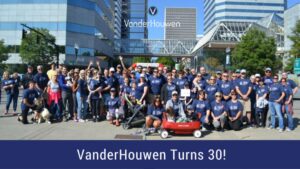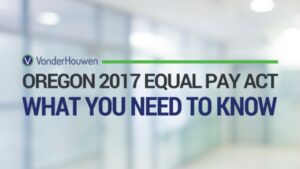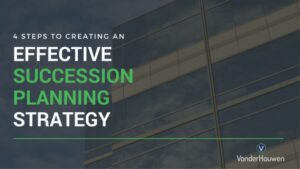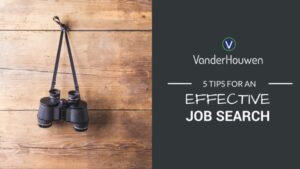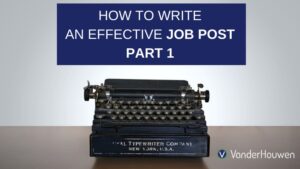Your Resume Can Beat the Bots – Here’s How
Ever wonder where your resume goes after you apply for a job online? To organize the volume of applications, companies typically rely on applicant tracking systems to help keep them organized. Applicant tracking systems (ATS) are used to—often manually—scan resumes for keywords and skills that match the job description. While they are great programs to assist with ranking likely qualified candidates, they aren’t perfect, nor are the people that use them.
Because there are countless ways to format a resume, some could parse it into the system cleanly while others are a jumbled mess. Not only does your resume need to articulate your skills and experience, but its formatting also needs to be easy to read and review inside the ATS. Not sure how to design your resume to be searchable by applicant tracking systems? Don’t worry! These are our top tips for writing an ATS-friendly resume.
If no immediate answer is available to you, sending in both a word processor document (Word, Google Docs, Pages, etc.) and a PDF is a good strategy. Note: If you’re in a creative field and have a specifically designed resume to show off your skills and portfolio, a PDF is fine, just know that it may not parse correctly through the software. Consider keeping a plain text version as a backup.
Use numbers, metrics, and active language to give the full picture of your achievements. Here’s an example: Instead of writing “I supported the sales team,” write “Supported a six-person team to deliver 11.2% growth over the previous year.”Sign up for our Newsletter!When you sign up for our monthly newsletter, you get direct access to valuable information about career guidance, hiring tips, local networking events and more!SUBSCRIBE
Because there are countless ways to format a resume, some could parse it into the system cleanly while others are a jumbled mess. Not only does your resume need to articulate your skills and experience, but its formatting also needs to be easy to read and review inside the ATS. Not sure how to design your resume to be searchable by applicant tracking systems? Don’t worry! These are our top tips for writing an ATS-friendly resume.
Use a Compatible File Type
Before sending your resume, check with your recruiter (or the website’s FAQ section, if available) to learn the preferred document type (.docx, PDF, etc.). Some ATSs work great with PDFs, while others process the content incorrectly or reject it altogether. That means saving your resume in multiple file formats is a smart decision. If you’re working with a professional recruiter, this will also allow them to adjust your resume (with your permission and review) for better results in the ATS!If no immediate answer is available to you, sending in both a word processor document (Word, Google Docs, Pages, etc.) and a PDF is a good strategy. Note: If you’re in a creative field and have a specifically designed resume to show off your skills and portfolio, a PDF is fine, just know that it may not parse correctly through the software. Consider keeping a plain text version as a backup.
Clearly Describe Your Achievements
Companies are often looking for someone who has knowledge within their industry and can demonstrate accomplishments indicating they could be a great hire. Your resume should be focused on how you used your skills to make a positive impact on the company you worked for. How did you apply your knowledge? Did you help complete a job two months early and under budget? Be sure to explain that.Use numbers, metrics, and active language to give the full picture of your achievements. Here’s an example: Instead of writing “I supported the sales team,” write “Supported a six-person team to deliver 11.2% growth over the previous year.”Sign up for our Newsletter!When you sign up for our monthly newsletter, you get direct access to valuable information about career guidance, hiring tips, local networking events and more!SUBSCRIBE
Make Your Resume Easy to Read
The biggest improvement you can do to make your resume easily readable is to format it thoughtfully. Hiring managers and recruiters need to be able to find the information they’re looking for quickly. You’ll need to catch their eye in the first few seconds, so make sure the content is well-organized!- Use standard headers: The ATS won’t recognize “What I’ve learned” as your education or skills section, so it could put those qualifications under something else, potentially causing a hiring manager to miss them. Stick to Summary/Professional Summary, Skills/Skills Summary, Experience, Education, Certifications, etc. as a best practice.
- Use bullets to break up blocks of text: Huge blocks of text or work history that’s out of order make for difficult reading. Short bullets are easier to read and can accommodate more information on the page.
- Check your font: Use common fonts like Calibri or Arial at 10-12 pt. size. Any font with too many details may be illegible to the ATS… or difficult for the person reading your resume and countless others. Avoid using more than two different fonts or colors. This could be distracting for the reader. After the 100th resume that day, the recruiter will be thankful if you make things easier for them!
- Be clear about your education: If you have a degree, list it. If you only have coursework, be sure it’s clear that you haven’t finished the degree. Don’t misrepresent your education level on your resume.
- In most cases, avoid graphics, charts, or images: Many ATS either can't read them or completely jumble the content. So, even though it looks nice, avoid graphics on your resume. Exceptions granted for creatives/designers in most instances here!
- Don’t put important information in the header or footer. Not all ATS can read the information in the header or footer sections of a document. Instead, list your contact information in a line under your name.
- Don’t overdo the keywords: It’s tempting to pad your resume with as many keywords as you can think of but it may cause the ATS to rank you for jobs that don't suit your skillset. Since you should be tailoring your resume for each job, a quick search of the job description will have a list of keywords you can incorporate where applicable.
- Include all relevant information like a portfolio or GitHub links. Providing access to examples of your work will tangibly highlight your skills. An interested hiring manager is likely to view these sites. Put your graphics, charts, and images there instead of on your resume!
- Remove unnecessary sections: Resumes should be focused on the experience you have and how you used it. Personal interests like baking cinnamon buns and watching Netflix don’t need to be on your resume.
- Remove professional references: If a manager wants your references, they’ll ask for them, so save the space on your resume. Keep references on a separate sheet to easily send to any hiring managers who ask. You also don’t want anyone calling your references before you give them a heads up on the job you’re interviewing for and you advise them on what to highlight in your background.
Edit Your Resume
- Follow common sentence structure and spelling guidelines. Not Every Word In A Sentence Should Be Capitalized. Spell check is also important. Adding keywords to your resume is only helpful if you’ve spelled them correctly. Both Grammarly and ProWritingAid can help with sentence structure and spelling if that’s something you need.
- Not only does it need to be edited for spelling and grammar, but you should also edit for redundancy. Why say something in two sentences that can be said in one? When you think you are done editing your resume, read it aloud (or have Google Docs read it to you). Your ears will hear problems that your eyes are skipping over.
- While you’re at it, check the length of your Skills Summary section. It’s great to list all the technologies and methodologies you’re skilled in, but showing how you used them within your Experience section will give an accurate picture of how you put them to use.
Need a great resume template? Try ours!




































